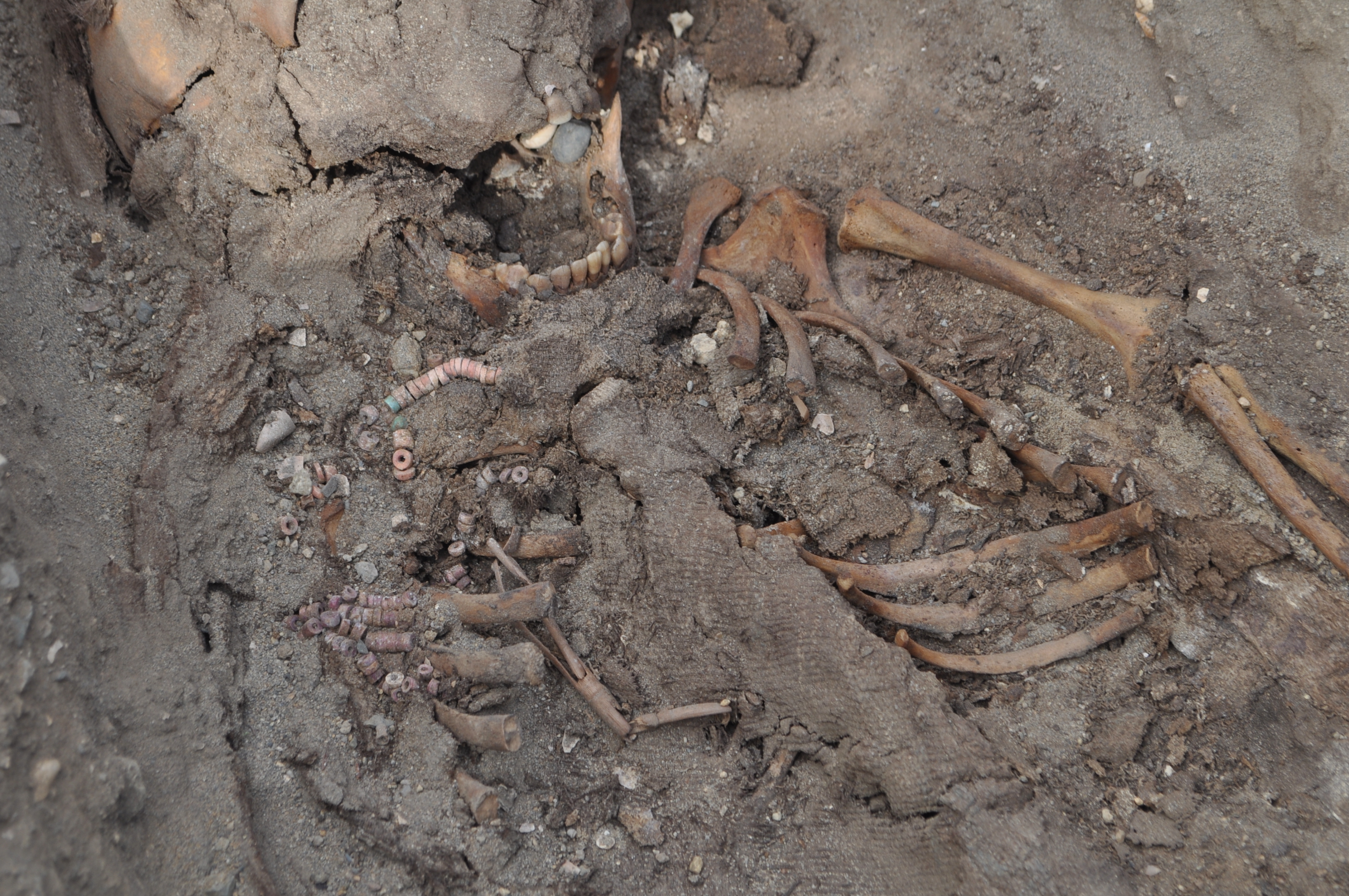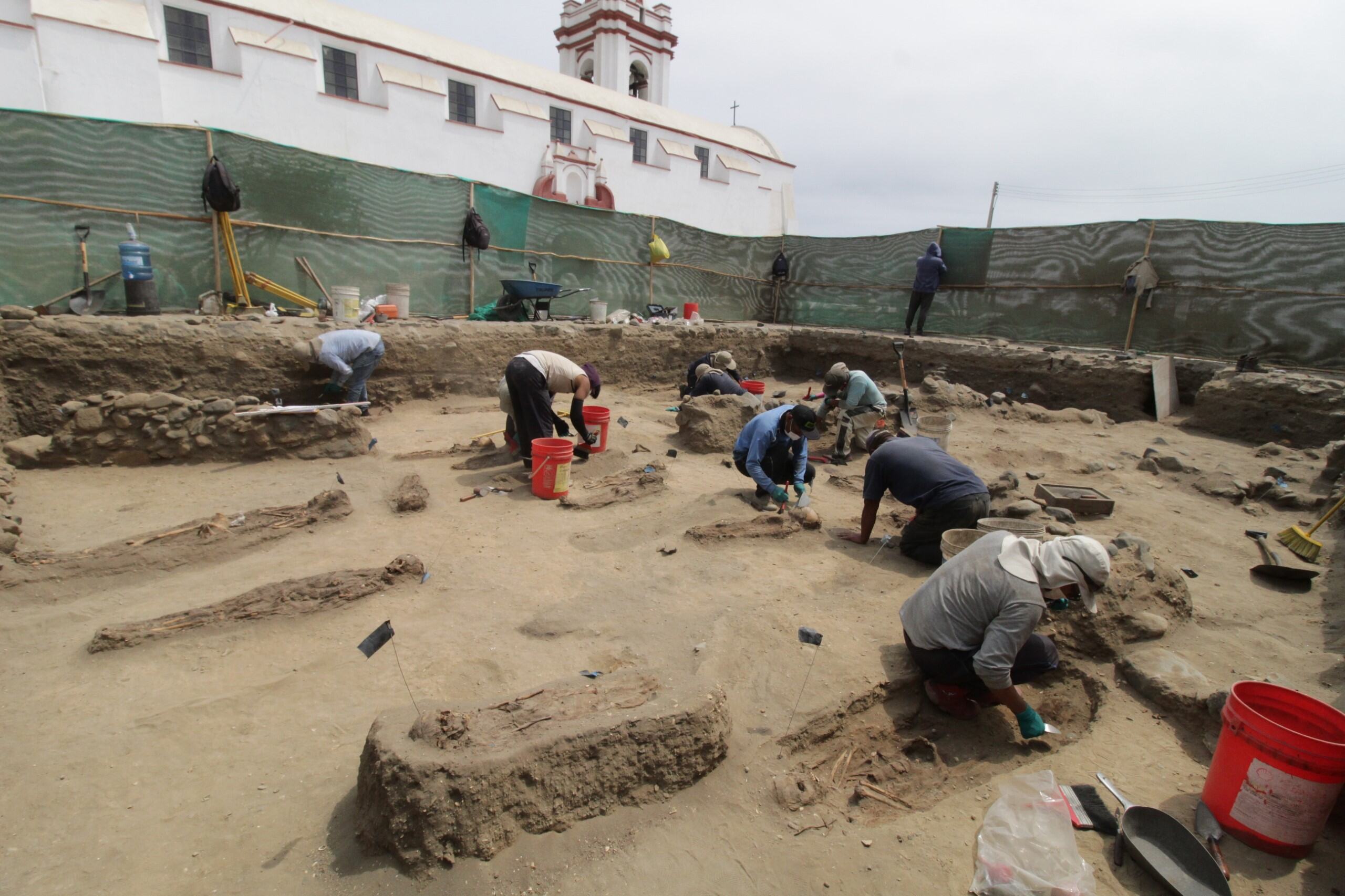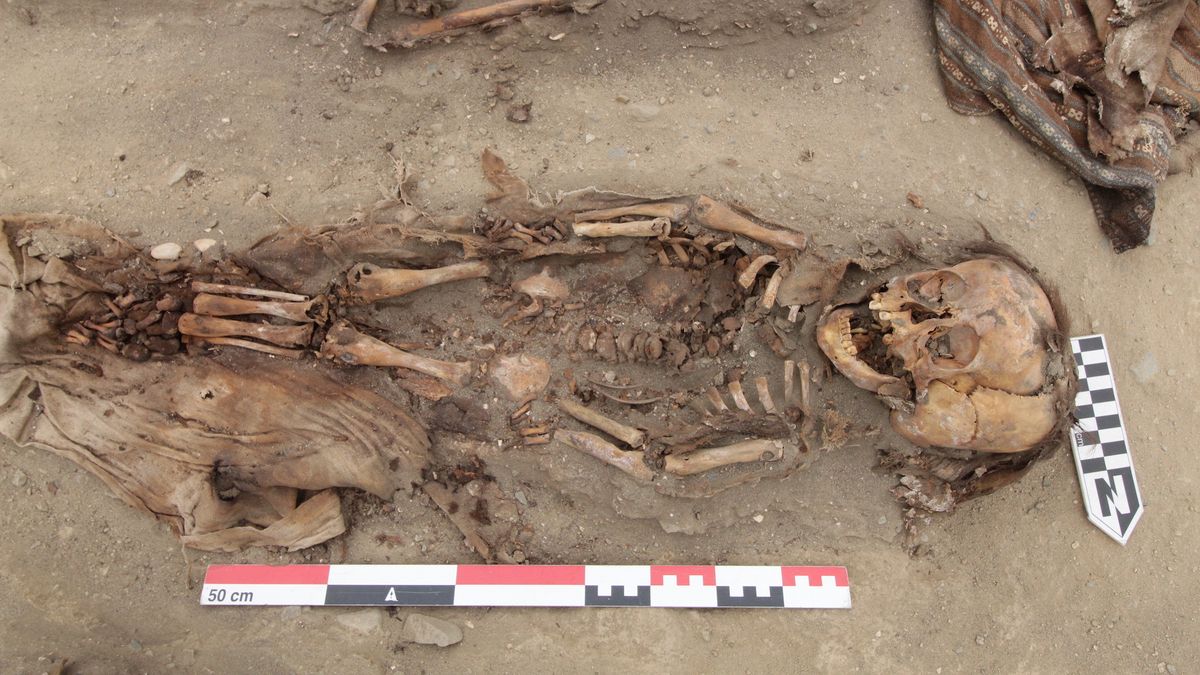A 16th-century cemetery in Peru holds the remains of two toddlers whose skeletons still show the devastating impact of smallpox in the early-colonial period. The rare find may hold key information about the earliest infectious diseases related to European colonization, according to a new study.
Recent archaeological excavations at Huanchaco, a small fishing town on the northwest coast of Peru, revealed a cemetery associated with a colonial church that was one of the earliest in the region, built by the Spanish between 1535 and 1540. The 120 burials that represent the early-colonial population there reflect the initial cultural changes of colonialism around 1540, with reed crosses and European-introduced glass beads included in the graves of Indigenous people.
But defects seen on the bones of two children buried in the Huanchaco church cemetery showcase another major effect of colonization: the introduction of the novel disease smallpox to a population that had never experienced it, according to a new study in the June issue of the International Journal of Paleopathology.
Smallpox, which is caused by the variola virus, was a well-known cause of death in the contact-era Americas. It likely arrived in northwest Peru with Francisco Pizarro and his soldiers in the late 1530s, resulting in the loss of about 70% of the native Inca population by 1620, according to the study. But because historical information about the early years of European contact in this area is limited, archaeological work is important for understanding the Indigenous people’s responses to colonization.
Of the 120 early-colonial burials found at Huanchaco, 90 (or 75%) were of children, and most of those (60 individuals, or 67%) were 5 years old or younger. These high numbers in children, one of the most vulnerable segments of the population because of their developing immune systems, are strongly suggestive of the presence of a novel disease, the researchers noted in their study.
Related: European slaughter of Indigenous Americans may have cooled the planet
The skeletons of two children, who were around 18 months old when they died, showed similar distributions of bony changes, according to the study. Specifically, the researchers identified numerous destructive lesions, almost like moth holes, in the joints of the kids’ shoulders, elbows, wrists, hips, knees and ankles. This pattern is consistent with an infection called osteomyelitis variolosa, which is triggered by the smallpox virus.

These are the earliest cases of osteomyelitis variolosa identified in South America, which is surprising given the numerous smallpox outbreaks that occurred after European contact. Not all people who contract smallpox have skeletal changes — the rate is around 5% to 20% in children younger than 5 — but “this rate suggests far more archaeological cases are going unidentified,” the researchers wrote.
Smallpox is a fast-acting infection, and it is unclear how long these children had the disease. “We can guess that it is possible, after their symptoms started, that they lived with smallpox for a few weeks,” lead author Khrystyne Tschinkel a bioarchaeologist at Hamline University in Minnesota, told Live Science in an email, “because there was enough time for the bones to become severely infected.”
It has been generally assumed that fast-spreading diseases that plagued the Americas around this time are hard to identify from bones. This means it is also difficult to definitively know who was responsible for the spread of the diseases, or where and when epidemics began. But according to Tschinkel, this is why it’s important to know the signs of smallpox and other infectious diseases, so these cases can be properly diagnosed.

Smallpox has existed for at least three millennia, with some of the earliest evidence coming from characteristic rashes on the skin of Egyptian mummies. The disease caused numerous epidemics over the centuries, resulting in millions of deaths, until it was eradicated in 1980 thanks to a world-wide vaccine campaign. Although researchers know the broad outline of how smallpox affected ancient cultures, there is a lack of reliable data on small-scale epidemics and on how the disease affected Indigenous populations.
“If we start to identify more of these cases,” Tschinkel said, “we can start to create a better understanding of how diseases spread and where outbreaks occurred during the early-colonial time period.”

Sarah Carter is a health and wellness expert residing in the UK. With a background in healthcare, she offers evidence-based advice on fitness, nutrition, and mental well-being, promoting healthier living for readers.








